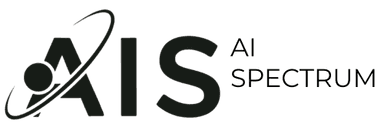Grok 4: xAI’s Breakthrough AI Model Takes the Lead in July 2025 (Cheating?)
Dive into xAI's Grok 4, its record-breaking performance on benchmarks like HLE, unique multi-agent architecture, real-time capabilities, and how it compares to competitors like Gemini 2.5 Pro and Claude 4. Explore pricing, future roadmap, and community debates.
xAI's Grok 4, released on July 9, 2025, has shaken up the AI landscape, claiming the top spot on multiple leaderboards and sparking debates about the future of large language models (LLMs). With its advanced reasoning, multi-agent system, and real-time integration, Grok 4 isn't just competing; it's redefining what's possible. This post breaks down its performance, features, comparisons, and what's next, while addressing community discussions on whether its multi-agent approach is a game-changer or an unfair edge.
Understanding Grok 4 Model Architecture
Grok-4-0709 is a single-agent model, not made of several instances. This is an important distinction in the Grok 4 family of models.
Model Architecture
Grok-4-0709 operates as one instance of the model that processes your input and returns an answer. It's xAI's latest single-agent model built on a transformer-based backbone with architectural refinements focused on logical consistency.
The Difference: Grok 4 vs. Grok 4 Heavy
The confusion might arise from the fact that xAI offers two variants in the Grok 4 family:
- Grok 4 (grok-4-0709): A single-agent model
- Grok 4 Heavy: A multi-agent system that runs multiple Grok 4 agents in parallel
Record-Breaking Performance on Benchmarks
Grok 4 has set new standards, particularly on Humanity’s Last Exam (HLE)—a grueling benchmark with 2,500 expert-level questions across over 100 disciplines. It's designed to challenge even the most advanced LLMs, and Grok 4 dominates.
Here's how Grok 4 stacks up against key competitors on major benchmarks:
| Benchmark | Grok 4 (Standard) | Grok 4 Heavy (Multi-Agent) | Gemini 2.5 Pro | Claude 4 Opus | GPT-4o / GPT-4.1 |
|---|---|---|---|---|---|
| HLE (without tools) | 25.4% | N/A | 21% | 10.7% | ~20-25% (est.) |
| HLE (with tools) | 38.6% | 44.4-50.7% | 21% | 10.7% | ~30-40% (est.) |
| SWE-bench | 72-75% | Higher (est. 80%+) | ~65% | ~60% | ~70% |
| AIME 25 | 95% | Higher | ~85% | ~80% | ~90% |
| GPQA | ~90% | Higher | ~80% | ~75% | 46-60% (GPT-4o/4.1) |
| ARC-AGI-1/2 | #1 | #1 | #2 | #3 | #4 (est.) |
Grok 4 Heavy's scores are particularly impressive, nearly doubling previous leaders on HLE. Leaked benchmarks suggest it could hit 45%+ in optimal conditions, a 24-point leap over Gemini 2.5 Pro. It also leads on SWE-bench for software engineering tasks and AIME for math problems, showcasing its strength in STEM evaluations.
What Makes Grok 4 Special
Grok 4 stands out due to its innovative architecture, led by technical expert Igor Babushkin (formerly of DeepMind and OpenAI). Here's what sets it apart:
Advanced Reasoning Architecture
Built on reinforcement learning with verifiable rewards (RLVW) and first-principles reasoning, Grok 4 breaks down complex problems to their fundamentals and rebuilds solutions from scratch. This includes OnlineRL and Offline RL techniques for improved adaptability, making it "better than PhD level in every subject," as claimed by Elon Musk.
Multi-Agent System (Grok 4 Heavy)
The "Heavy" version (also called SuperGrok Heavy or Agentic Platform) deploys up to 32 parallel agents that debate and refine answers. This multi-agent approach boosts accuracy, reduces hallucinations, and allows for longer "thinking" time—mirroring human problem-solving. However, it requires more compute, taking minutes for complex tasks.
Real-Time Knowledge Integration
Unlike static models, Grok 4 integrates directly with X (formerly Twitter) for live updates on news, trends, and events. This gives it an edge in dynamic scenarios, though its web client interface draws inspiration from ChatGPT's.
Current Rankings and Community Debates
Grok 4 tops leaderboards like the Artificial Analysis Intelligence Index, ARC-AGI benchmarks for general intelligence, and academic STEM evaluations. It's superior to Claude 4 and Gemini 2.5 Pro in reasoning and speed, while offering strong coding capabilities—though developers note Claude 4 Sonnet leads for pure coding tasks, and tools like Cursor or Windsurf provide better daily productivity than autonomous options like DevinAI ($500/month license).
That said, the AI community is buzzing with debate: Is Grok 4 Heavy's multi-agent system "cheating" traditional benchmarks? Critics argue it's not a fair single-agent comparison, as it throws massive compute (trained on 300K NVIDIA H100 GPUs) at inference time—jumping from 38.6% to 50.7% on HLE. Proponents counter that it reflects real-world problem-solving, like humans consulting multiple perspectives.
Fairer comparisons:
- Single-Agent: Grok 4 (37.5%) vs. Gemini 2.5 Pro (34.5%)—neck-and-neck.
- Multi-Agent: Grok 4 Heavy (50.7%) vs. Gemini DeepThink (49.4%)—similar approaches.
This highlights the need for new standards: separate categories for single vs. multi-agent systems, resource-normalized scoring, or benchmarks tailored to multi-agents. Scores above 50% on HLE or 90% on GPQA could signal artificial superintelligence (ASI)—and Grok 4 Heavy is flirting with those thresholds.
Pricing and Availability
- Grok 4 Standard: $30/month subscription for core access.
- Grok 4 Heavy (SuperGrok): $300/month for multi-agent features and advanced tools.
What's Coming Next
xAI's 2025 roadmap is ambitious:
- August: Image generation and editing.
- September-October: Video processing and generation (rivaling OpenAI's Sora).
- Future: Vision in voice mode, persistent memory, and potential tech discoveries by late 2025.
With GPT-5 and Gemini 3 on the horizon (and o1 reasoning models scoring 81-83% on some metrics), the race is heating up. Grok 4's blend of reasoning, real-time access, and multi-agent power positions it as a leader—for now. Whether it achieves Musk's bold visions remains to be seen, but its benchmarks prove it's a significant leap forward.
